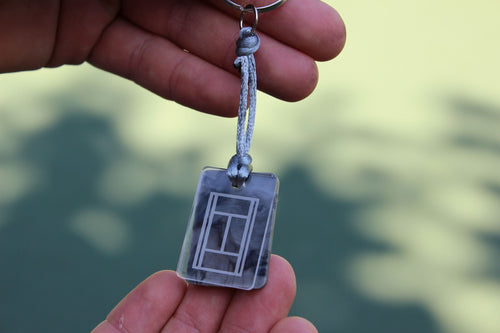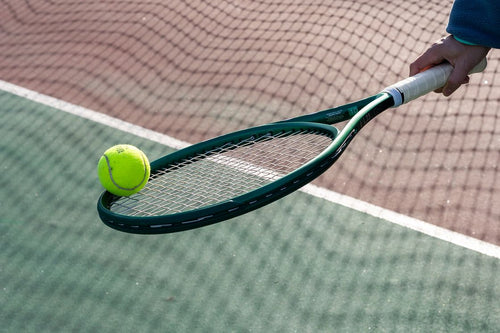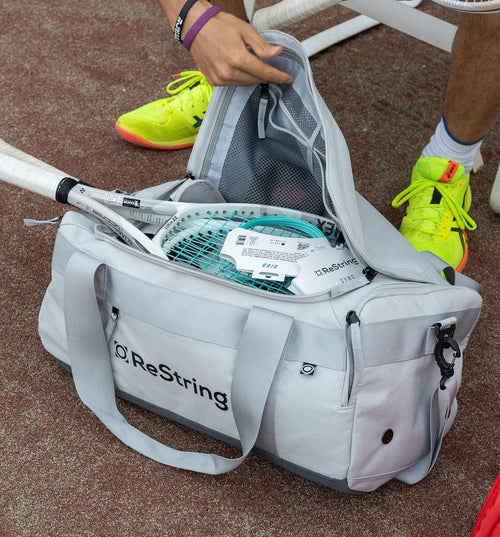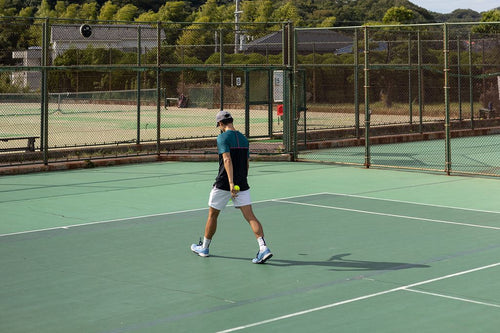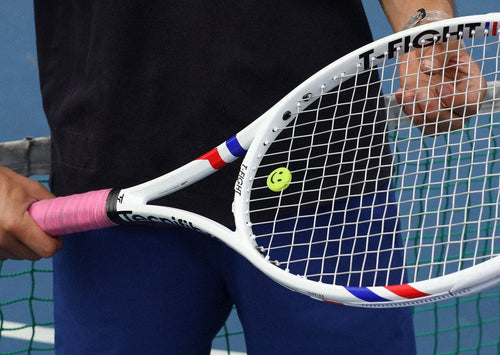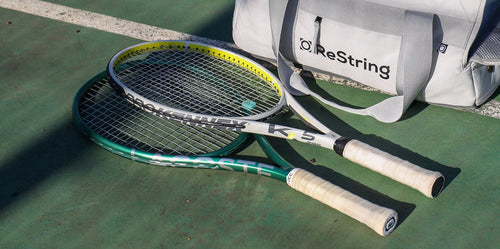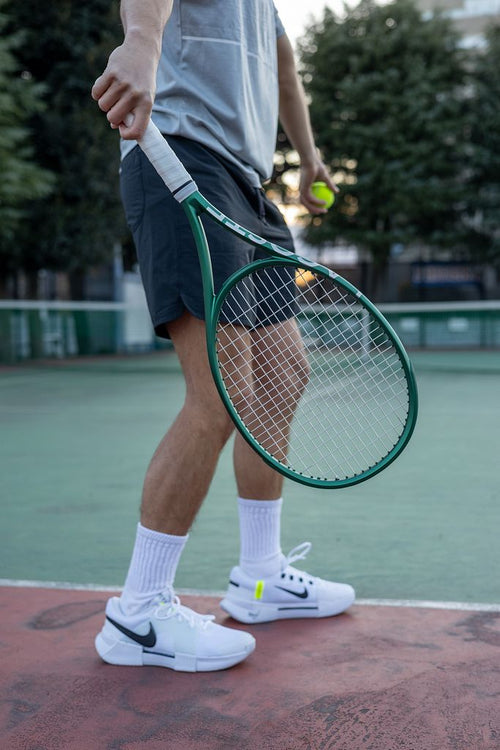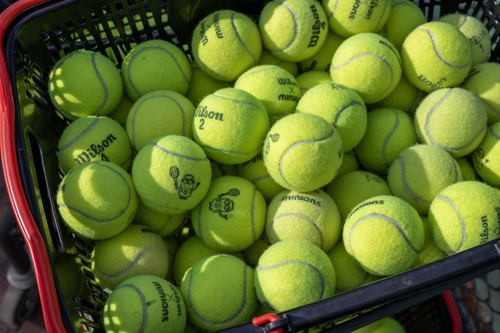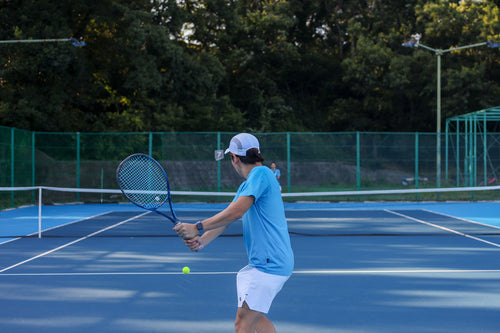Tennis String Durability: A Complete Guide
Juan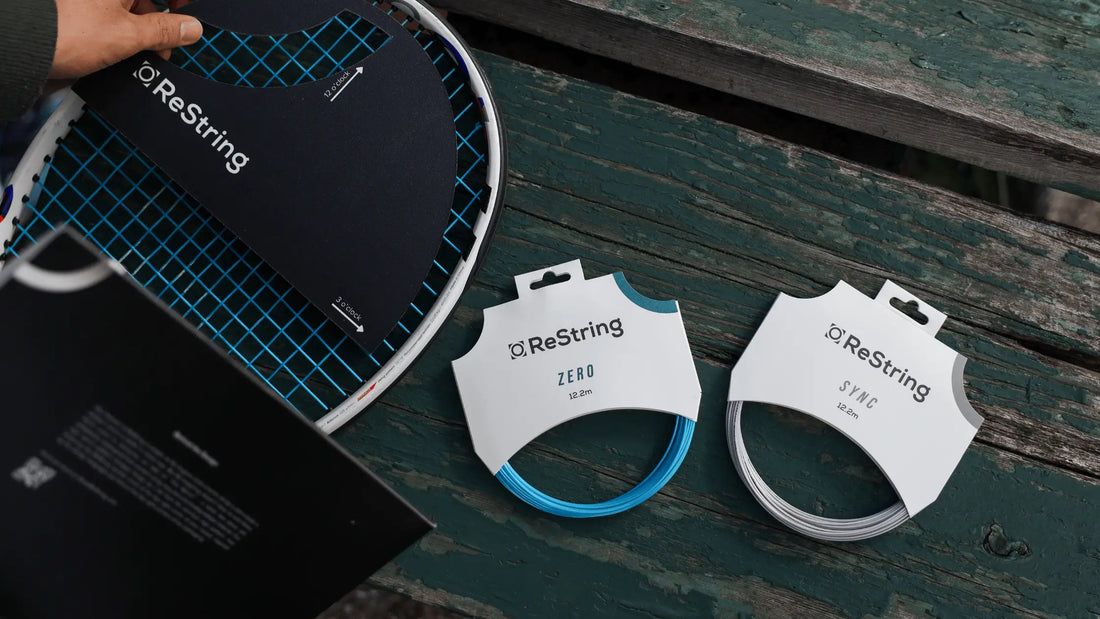
Remember when we all had to accept that powerful, spin-friendly strings would break within a few hours of play? That compromise defined us for decades - until now.
Modern co-polyester strings have revolutionized string durability, with advanced materials and manufacturing processes leading to significantly longer string life. Strings like Zero and Sync are leading this innovation, offering fresh, crisp feeling strings that last longer.
This guide will explore factors affecting string durability, provide maintenance tips, and help you make informed decisions about string selection and replacement timing.
Factors Affecting String Durability
String Material
The evolution of tennis string materials is fascinating. For decades, natural gut dominated professional tennis, but its poor durability forced players to compromise. Early synthetic strings solved some durability issues but sacrificed performance. Then came the polyester revolution.
In recent years, modern polyester strings (specifically co-polyester strings) have become the gold standard, combining tournament-level performance with exceptional durability.
The durability of these strings is enhanced not only by their polyester material, but also by specialized coatings that reduce internal friction during play.
ReString's approach with Zero and Sync takes this coating innovation even further by integrating the coating solution directly into the string structure, extending string life and enhancing snapback.
String Tension
Higher tensions create more stress on the strings, typically leading to faster breakage, while lower tensions can extend string life but may sacrifice some control.
Most strings experience initial tension loss, impacting long-term durability. However, Zero and Sync are engineered to maintain their initial playability characteristics across their lifespan.
Gauge Thickness
Thicker gauges offer greater durability but reduce feel and playability. Conversely, thinner gauges provide enhanced feel and spin potential but break more quickly.
Choosing the right gauge depends on your playing level and style. Advanced players often prefer thinner gauges like Sync 18G for maximum performance, accepting more frequent string changes as a trade-off. Recreational players might benefit from slightly thicker gauges like Zero 16G that offer a better balance between durability and playability.
Playing Style
Players who generate heavy topspin typically experience faster string wear due to increased friction and string movement.
On the other hand, flat hitters generally enjoy longer string life as their strings endure less aggressive movement and snapback.
Environmental Conditions
Extreme temperatures and humidity can alter the molecular structure of tennis strings, compromising their performance and durability.
Indoor play typically results in more consistent string life, while outdoor conditions expose strings to variable temperatures and humidity, potentially accelerating wear.
Modern co-polyester strings have revolutionized durability while maintaining performance, with material composition, tension, gauge thickness, playing style, and environmental conditions all playing crucial roles in string longevity.
Best Durable Strings
ReString Strings
ReString has engineered Zero and Sync to address the durability challenges players face.
Both Zero and Sync combine maximum performance with exceptional durability through innovative design and materials. The strings maintain their playability characteristics significantly longer than traditional options, resulting in fewer string changes and more consistent performance.
ReString's Zero and Sync strings represent the latest evolution in string technology, offering exceptional durability without compromising playability through innovative design and materials.
FAQs
How do I maximise the durability of my strings?
Store your racket in a cool, dry place when not in use, as extreme temperatures and humidity can decrease the lifespan of your strings.
How often should I restring my racket?
The general rule is to restring your racket as many times per year as you play per week. For example, if you play twice weekly, restring about 2 times a year. However, frequency may increase with aggressive playing styles or decrease with modern durable strings.
How do I know when to replace my strings?
Replace your tennis strings when you notice decreased performance. Key things to look for include visible notching at string intersections, movement of strings out of their original position, or loss of tension resulting in a "trampoline" effect.
Should I use string savers?
String savers can extend string life but may affect playability and feel. Modern polyester strings with advanced durability often eliminate the need for string savers. Instead, consider using strings specifically engineered for durability while maintaining optimal performance characteristics.
Conclusion
Understanding string durability is essential for maintaining consistent performance and managing equipment costs.
Modern polyester strings with advanced coating technologies have revolutionized string longevity while maintaining excellent playability. By considering factors like string material, tension, gauge, and playing conditions, you can make informed decisions about your string setup.
For players seeking the perfect balance of durability and performance, Zero and Sync offer innovative solutions engineered for extended playability and consistent performance. Remember to maintain your strings properly and replace them when needed to ensure you’re always playing at your best 🎾

